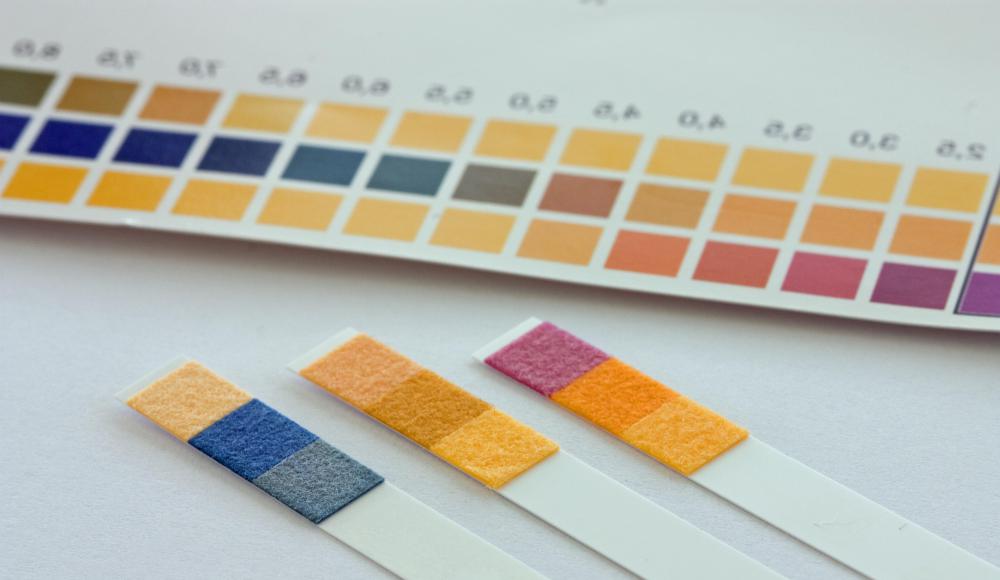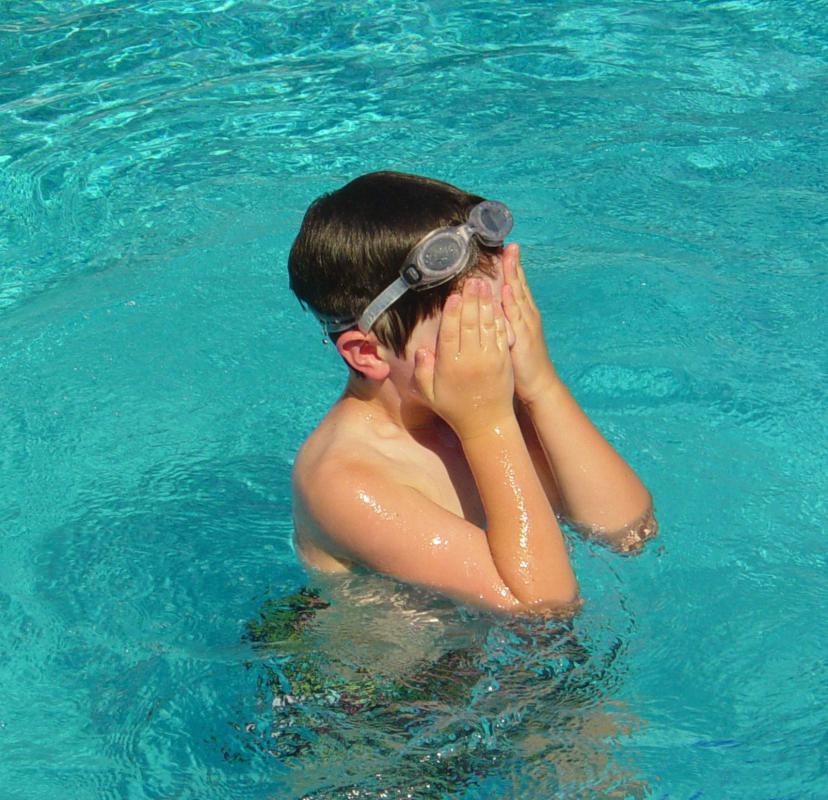At HomeQuestionsAnswered, we're committed to delivering accurate, trustworthy information. Our expert-authored content is rigorously fact-checked and sourced from credible authorities. Discover how we uphold the highest standards in providing you with reliable knowledge.
In a Swimming Pool, what are Optimum Chlorine Levels?
The water in a swimming pool should be clear and free of strong odors, and the tiles should feel clean and smooth, with no slime or discoloration. Regular maintenance is required to keep both above-ground and in-ground swimming pools clean and healthy. Pathogens that cause illness must be removed or destroyed, and algae must be prevented to keep the water clear. Maintaining optimum pH and chlorine levels is necessary to keep a swimming pool safe to use.
Optimum chlorine levels for most water temperatures is between 1 and 3 parts per million (ppm). Ideally, the swimming pool should always be around 2 ppm, and the water needs to be tested regularly. The chlorine levels in a pool include both the free chlorine that is actively cleaning the pool, and the combined chlorine, or chloramines, that is created when chlorine binds with contaminants and becomes inactive.

Chlorine levels in swimming pools are generally maintained in two ways. First, there is a slow-release chlorine tablet or chlorine stick somewhere near the filter that distributes chlorine throughout the water. Different brands of slow-release chlorine last for varying amounts of time, so read the instructions carefully. As the chlorine binds with contaminants, it becomes inactive. Therefore, the pool water has to be "shocked" every week or two by adding powered or liquid chlorine directly into the water. The shock treatment burns off the used chlorine which is then removed by the filter.

When a swimming pool smells strongly of chlorine or burns the eyes or skin, many people believe this is caused by high chlorine levels, but this is generally not the case. A strong chlorine odor is caused by excess chloramines in the pool. Chloramines are the compound that is created when chlorine combines with the ammonia in the contaminants. It is inactive chlorine and should be removed by shocking the pool with active chlorine.

If the pool water causes burning of the eyes or skin or reddening of the eyes, the cause is often too high or low of a pH. A swimming pool’s pH should ideally be between 7.2 and 7.6. If the pH is too low, it can corrode heating and filtering equipment and stain the walls. If pH is too high, chlorine can become inefficient or inactive. PH can be lowered with acid and raised with soda ash, although pool owners should investigate other reasons for changes in pH before attempting to adjust it.
AS FEATURED ON:
AS FEATURED ON:















Discussion Comments
Stipulating a target FC level without indicating the corresponding CYA level is pure ignorance.
To maintain an appropriate FC/CYA ratio to prevent algae growth, you usually have to use unstabilized chlorine, usually chlorinating liquid or bleach.
It is rare to be able to use only stabilized chlorine, such as Trichlor pucks/tabs, because it will increase Cyanuric Acid (CYA a.k.a. stabilizer or conditioner) over time.
The following are factual chemical rules that are independent of concentration of product or of pool size:
For every 10 ppm Free Chlorine (FC) added by Trichlor, it also increases Cyanuric Acid (CYA) by 6 ppm.
For every 10 ppm FC added by Dichlor, it also increases CYA by 9 ppm.
For every 10 ppm FC added by Cal-Hypo, it also increases Calcium Hardness (CH) by at least 7 ppm.
How do you maintain the FC/CYA ratio? Shocking the pool regularly seemed a bit extreme to me too.
The Free Chlorine (FC) level needed to prevent algae growth using chlorine alone depends on the Cyanuric Acid (CYA) level since it is the ratio of FC to CYA that determines the active chlorine (hypochlorous acid) level.
If you properly maintain the FC/CYA ratio, then you do not need to regularly shock your pool nor use algaecides, phosphate removers, clarifiers, flocculants.
Post your comments